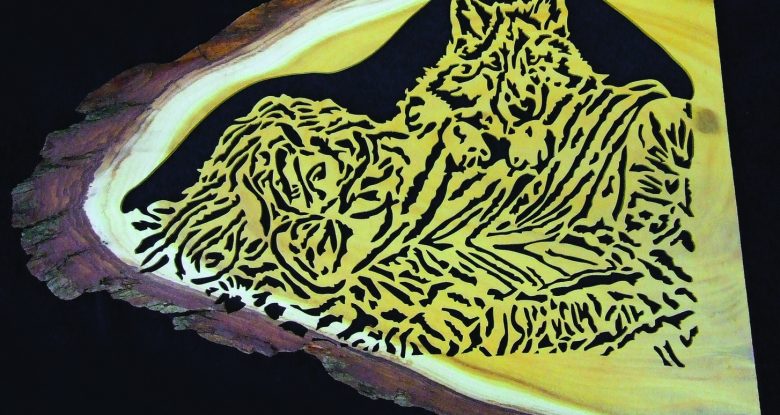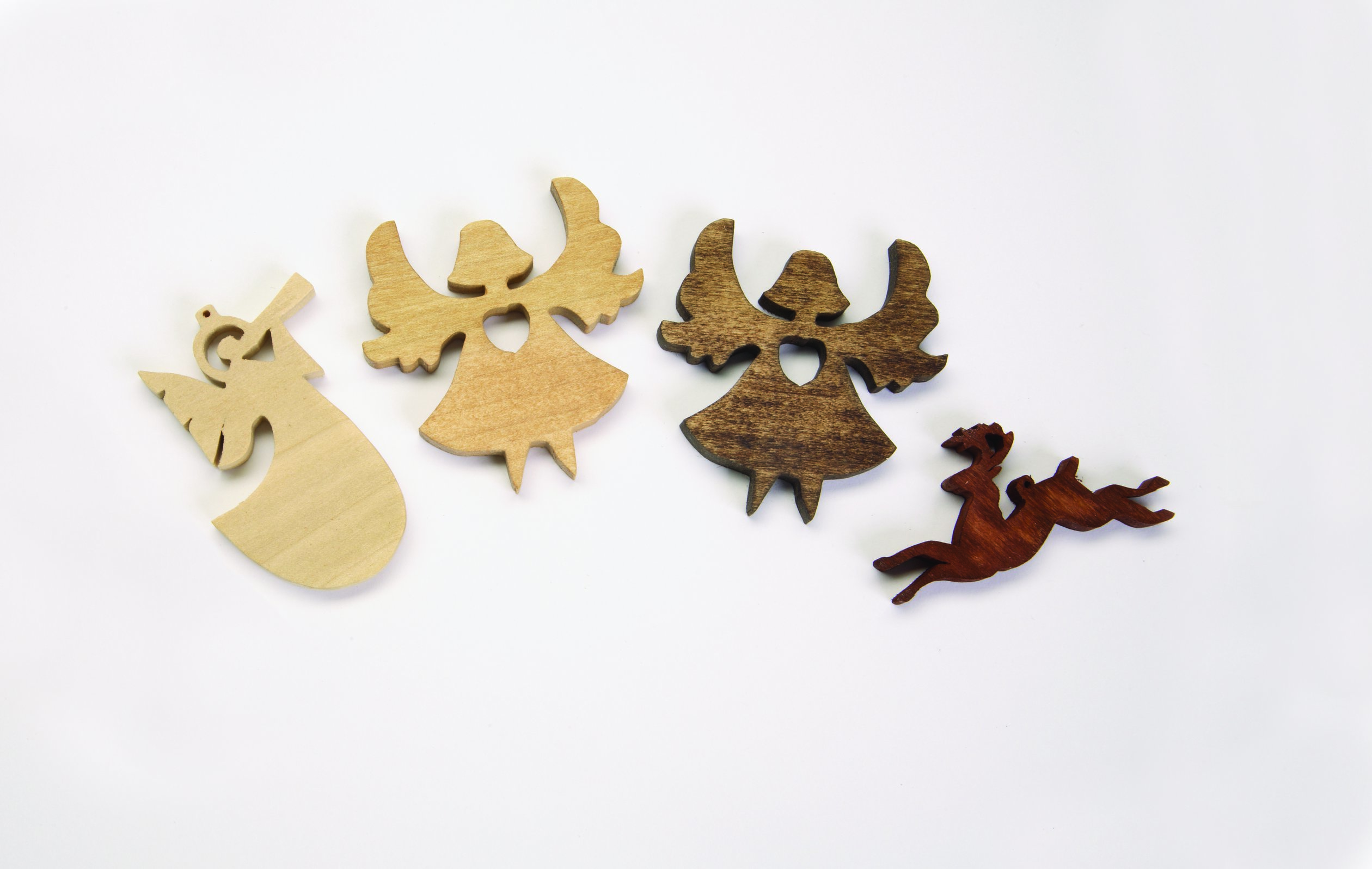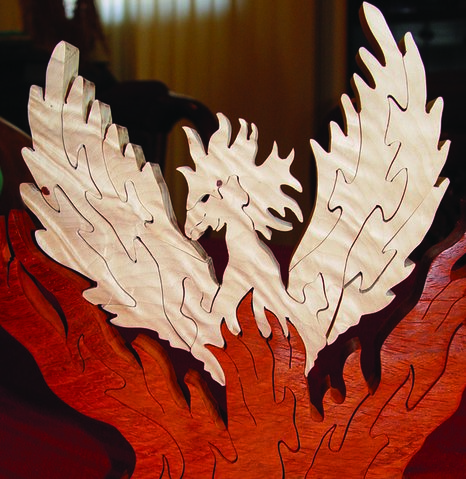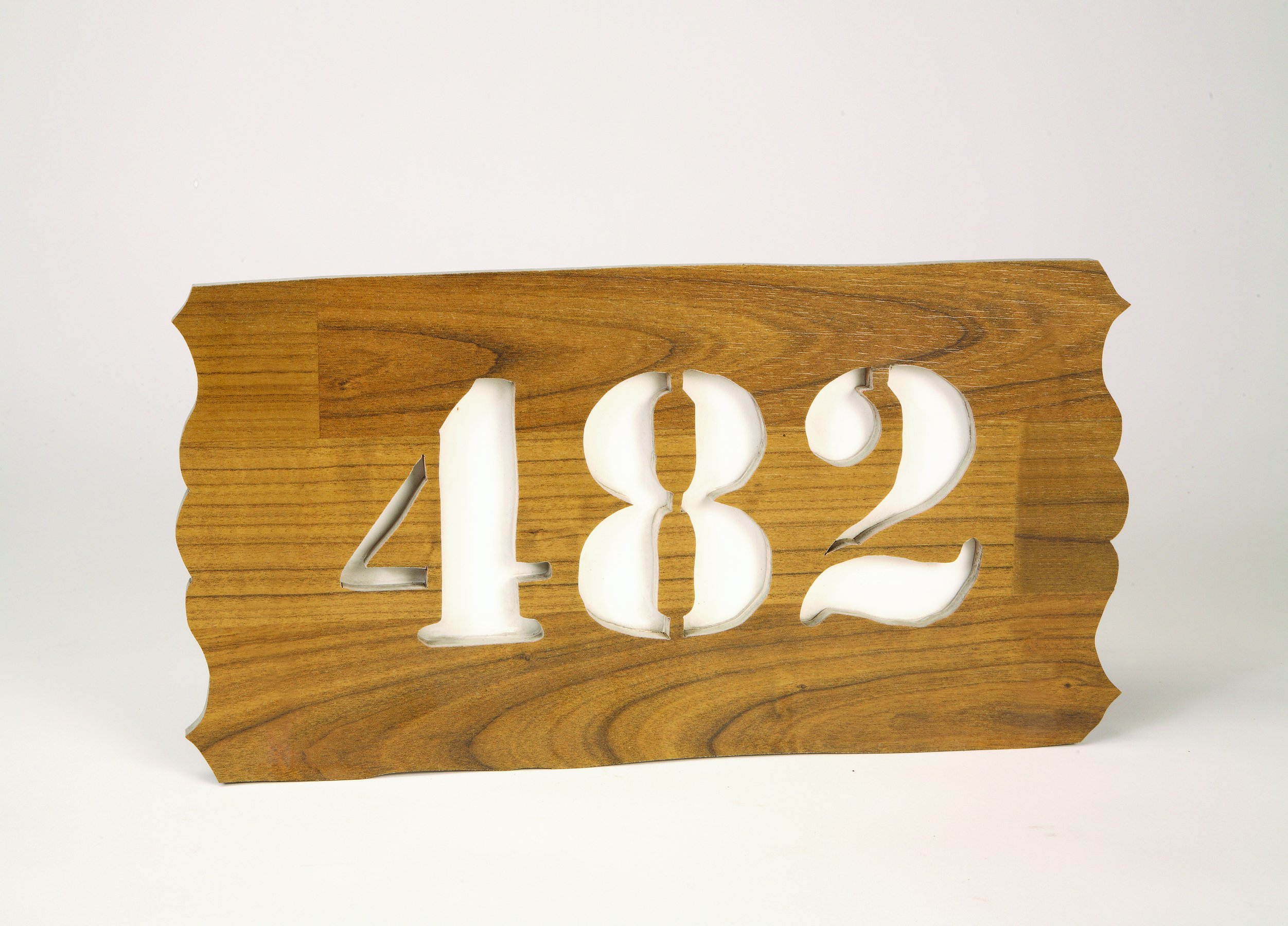Bright yellow hardwood is excellent for scroll sawing
by Kevin Daly
This article was first published in issue 32 of Scroll Saw Woodworking & Crafts.
Osage orange is readily recognized by its distinct yellow color. Unfortunately, the vibrant color usually turns a light brown when the wood is exposed to oxygen and sunlight. You can take steps to preserve or at least prolong the vivid yellow color, and despite being a relatively hard wood, it’s a joy to cut on the scroll saw.
A relative of the mulberry tree, Osage orange, also known as bodark, horse apple, and bois d’arc, is native to the central United States, but it has been planted throughout the United States and Canada as a hedge row or wind break tree. Most people consider it a shrub, since it tends to stay small, but Osage orange trees can grow up to 60′ tall. The sapwood is usually white.
Osage orange is popular with intarsia artists, but most of my scroll work is done in the portrait style. To give my projects more character, I prefer to use hardwoods instead of traditional Baltic birch plywood. I have cut projects in a variety of hardwoods, ranging from spalted mahogany to Brazilian cherry (jatoba).
Osage orange costs between $6 and $8 per board foot, depending on the thickness and width of the board. I purchased several slabs from Cutting Edge Wood Works, www.cuttingedgewoodworksonline.com.
Working with Osage Orange
Osage orange is rated at 2040 on the Janka hardness scale. This is close to the tropical hardwood goncalo alves (2160). It is one of the hardest domestic hardwoods, even harder than hickory (1820).
The design I cut required me to drill 251 blade-entry holes. I didn’t break a single #63 drill bit. By contrast, when I cut Brazilian cherry, I am lucky to drill 30 holes without breaking a bit.
I was surprised how easy the 1/4″-thick wood was to cut on the scroll saw. I have heard horror stories about how difficult Osage orange is to cut, but I found that it cut well with the #1 reverse-tooth blades that I use for 90% of my portraits. I actually had to reduce the speed of my saw so I could control it. It is a bit tougher to cut than mahogany, but much easier than Brazilian cherry.
The hard, straight grain makes it an ideal wood for cutting intricate portraits. I was able to cut the entire portrait without any breakage. While the wood is hard, it sands and shapes well, which makes it a good choice for intarsia artists.
Finishing Osage Orange
I recommend sanding the completed project with progressively finer grits of sandpaper, up to 220 grit, before applying a water-based lacquer finish. This results in a beautiful, glass-like finish.
I chose a clear water-based lacquer finish to preserve the color as much as possible. The water-based lacquer does darken the wood a little bit, but it provides some protection from sunlight and ultraviolet (UV) rays. For best results, sand with 400-grit sandpaper between coats of lacquer and try to keep the piece out of direct sunlight.
If you are willing to sacrifice a bit of the color, use an exterior spar varnish, which is designed to provide additional protection from UV rays.
Summary
Osage orange is a hard wood, but it is easy to cut on the scroll saw. I suggest using relatively thin wood to cut intricate fretwork. The grain promotes a smooth cut without a lot of tear-out or breakage. The bright yellow color may darken over time, but the proper finish can slow or stop this reaction.
Discuss this material on the Scroll Saw Woodworking & Crafts forums.









